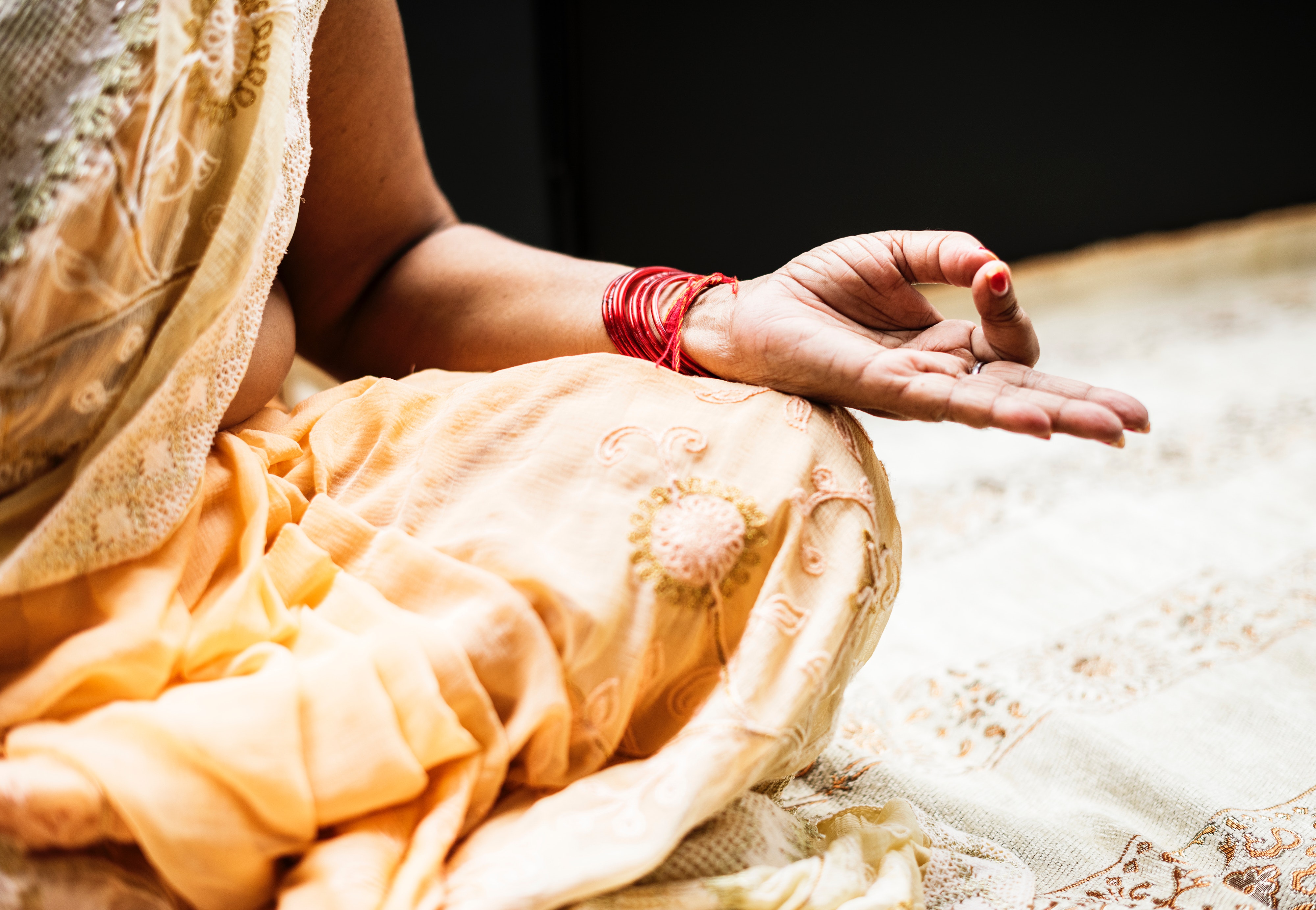Finding balance in body and mind – this is what both yoga and ayurveda are about. Yoga and ayurveda are both ancient philosophies from India, both have a holistic approach towards life, and both encompass techniques to develop a healthy lifestyle. It is not surprising they are often named in one breath. However, yoga and ayurveda have been developed independently, and although they go hand in hand, they are not the same. How exactly are yoga and ayurveda related to each other?
The ultimate goal of yoga

Yoga philosophy, on the one hand, postulates that the ultimate goal of the yogi is to find liberation, freedom of the soul, called ‘moksha’. This is a state in which the true self is free from attachment to the physical world and the desires of the ego, and thereby free from suffering. Yoga philosophy says that this is spiritual enlightenment and it can be achieved through a dedicated practice of yoga. Yoga refers to a broad spectrum of techniques to control the body and mind.
The purpose of ayurveda

Ayurveda, on the other hand, literally means ‘the science of life’ and focuses on maintaining homeostasis, the natural balance of the body and mind. Ayurveda also prescribes a variety of practices in the body-mind spectrum, but the purpose is slightly different: to live a healthy life, in order to develop power and strength. The practices may range from nutrition to massage and the use of natural medicine.
Where yoga and ayurveda meet
As you can see, yoga and ayurveda originate from a slightly different point of view – spiritual enlightenment versus a healthy lifestyle – but they perfectly complement each other. The yogi, seeking liberation of the soul, needs to work on a healthy body, as this is a prerequisite for calming the mind. Ayurvedic principles can thus be very useful for yoga practitioners. Insights from yoga, in turn, can be applied as part of the ayurvedic lifestyle, as they provide guidelines for better health and a longer life. Many ayurvedic doctors encourage clients to do yoga asanas to strengthen the body and reduce stress, as this will help to achieve optimal health and prevent diseases. And most yoga practitioners use purification or detox techniques and diet guidelines from ayurveda to lift their yoga practice to a higher level.
Yoga to balance the doshas
Yoga and ayurveda are so much intertwined now that many readers will recognize lifestyle principles from their experience with either field. Yoga asanas, the physical postures, are often applied to balance the constitution of the individual according to the ayurvedic framework of the doshas.
The doshas are different qualities that are naturally present in any aspect of life, including the body. They each consist of a specific combination of the basic elements in nature. These elements are earth, water, fire, air and ether (or space). In general, ayurveda uses three main doshas to describe the constitution of these elements in the body:
- Vata, which is a combination of air and ether, characterized by movement, irregularity, subtlety and lightness
- Pitta, which is made up of fire and water, is the dosha of transformation, drive, heat and power
- Kapha, which consists of earth and water, with the main features of stability, slowness, steadiness and heaviness
This is just a brief description; all doshas correspond with specific characteristics in the body, the functioning of the organs, tendencies of the mind and the biological rhythm. They are also connected to other natural rhythms, such as the seasons and the cycle of day and night.
The three doshas are always present, but one may be more dominant than the other. When the doshas are balanced, all present in equal proportions, the body is in optimal health. This can be achieved by practices to balance the doshas. It is important to know your own constitution before applying any techniques; a consultation with an ayurveda practitioner may be helpful to learn about your personal constitution.
When you know your own constitution, you could think about the qualities in your yoga practice that help you to find balance. You can use the following guidelines:
- To balance vata, you can practice a grounding and calming yoga sequence. Examples of grounding yoga poses are: malasana, tree pose, mountain pose.
- To balance pitta, think of cooling and balancing yoga poses. A few examples for balancing and cooling yoga practice: paschimothanasana, shoulder stand, happy baby.
- To balance kapha, you should practice warming and strengthening yoga exercises. You can think of boat pose, bridge, and the warriors.

Yoga and ayurveda as preventive medicine
Note that the constitution of the doshas may change over time, influenced by both external and natural changes, but also by your own effort. You may find balance, the healthy homeostasis of the body.
When the body is balanced, you should keep practicing yoga and other balancing techniques to maintain optimal health. This is a way to prevent disease, which is the core of ayurveda as well as yoga therapy. Diseases and disorders, according to yoga philosophy and ayurveda, are caused by disbalances in the natural constitution. These disbalances can be prevented or reversed by healthy habits and natural medicine. It is therefore important to work continuously on a healthy lifestyle, including a balanced diet, sufficient exercise, proper relaxation and rest, as well as a positive and nourishing environment. These are the pillars of a healthy, balanced and fulfilling life.
What do you do to balance your body and mind? How do you use yoga and/or ayurveda as part of a healthy lifestyle? Leave a comment to share your experiences and goals.
Sources:
A Pukka Life: Finding your Path to Perfect Health – Sebastian Pole


Leave a comment